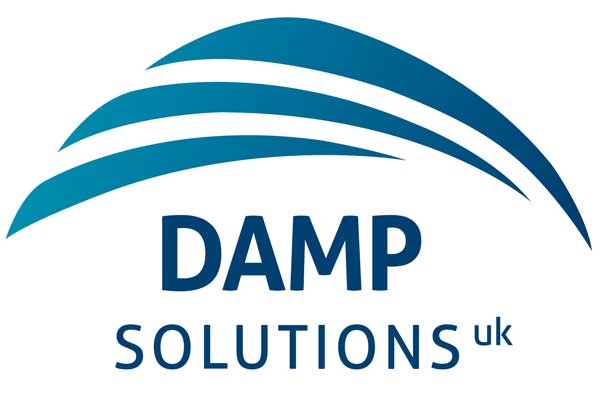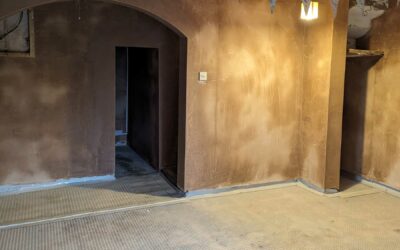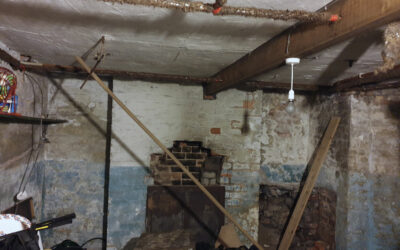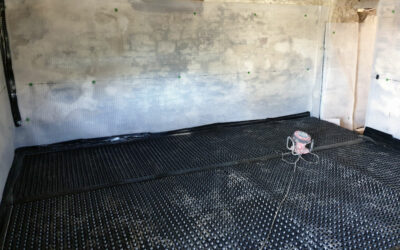A ‘Type C’ Waterproofing System is a maintainable waterproofing solution for existing and new-build basements, refurbishment and retrofit projects. The Type C System comprises of two key components, a Cavity Drainage Membrane and Basement Drainage system.
A Comprehensive Solution for Damp Basements
Basements are valuable spaces in homes, offering additional living areas or storage space. However, they are also prone to dampness and water ingress, which can lead to structural damage and health hazards. To combat these issues, homeowners need effective waterproofing systems. Among them, Type C waterproofing stands out as a comprehensive solution specifically designed to tackle dampness in basements. In this article, we delve into what a Type C waterproofing system entails and how it can effectively address dampness in basements.
3 Types of Waterproofing Systems?
Type A Waterproofing: This method involves creating a barrier against water ingress by applying coatings or membranes directly onto the external surfaces of basement walls and floors. It aims to prevent water from penetrating the structure.
Type B Waterproofing: Also known as integral waterproofing, Type B involves adding waterproofing agents or admixtures to the concrete mix during construction. This method aims to make the concrete itself impermeable to water.
Type C Waterproofing: Also known as cavity drain membrane systems, is a widely recognized method for managing water ingress in below-ground structures, particularly basements. Unlike traditional tanking methods that rely on creating a barrier against water, Type C systems manage water by collecting and diverting it away from the structure.
How Does a Type C Waterproofing System Work?
Type C waterproofing systems consist of a series of membranes and drainage channels installed on the internal surfaces of basement walls and floors.
These membranes create a cavity between them and the structure, allowing any water ingress to pass through the membrane and into the drainage channels.
The collected water is then safely directed to a sump pump or drainage point, preventing it from causing damage to the building.
Benefits of Type C Waterproofing Systems:
- Flexibility: Type C systems are versatile and can be installed in both new constructions and existing buildings, making them suitable for a wide range of basement structures.
- Minimal Disruption: Installation of Type C systems is relatively non-disruptive compared to traditional tanking methods, as it does not require extensive excavation or structural alterations.
- Continuous Monitoring: Since Type C systems rely on drainage channels and sump pumps, they offer the advantage of continuous monitoring and maintenance, ensuring effective water management over time.
- Breathable Properties: Unlike tanking systems that create a barrier, Type C membranes are breathable, allowing the basement structure to “breathe” and reducing the risk of trapped moisture and condensation.
- Long-Term Solution: Type C waterproofing systems provide long-lasting protection against water ingress, reducing the need for frequent repairs and maintenance associated with damp basements.
Our Case Studies
Basement Waterproofing in Manchesters Victorian Home
Homeowners of a charming Victorian-era property in Manchester, were experiencing recurring issues with water seepage in their basement.
Basement Waterproofing in Manchester
This case study explores a real-life scenario where a homeowner in Manchester faced persistent water intrusion issues in their basement.
Solutions for Damp Basements:
- Professional Assessment: Begin by consulting with a qualified waterproofing specialist to assess the extent of dampness and determine the most suitable solution for your basement.
- Installation of Type C Waterproofing: Consider installing a Type C waterproofing system tailored to your basement’s requirements. Professional installation ensures proper functioning and long-term effectiveness.
- Addressing External Drainage Issues: Ensure proper external drainage around the perimeter of your home to minimize water accumulation around the basement walls.
- Interior Humidity Control: Implement measures such as dehumidifiers and proper ventilation to control interior humidity levels and reduce the risk of condensation.
- Regular Maintenance: Schedule periodic inspections and maintenance of your Type C waterproofing system to ensure optimal performance and early detection of any issues.
In conclusion, Type C waterproofing systems offer a holistic solution for addressing dampness in basements by effectively managing water ingress and preventing structural damage.
By understanding the principles behind Type C waterproofing and implementing appropriate solutions, homeowners can enjoy dry, comfortable, and healthy basement spaces for years to come.
How much is it to Survey?
If you’re tired of dealing with dampness ruining your basement vibes, it’s time to reach out to the experts at Damp Solutions UK!
Our team knows all the ins and outs of keeping basements dry and cozy, so you can finally make the most of that space without worrying about water issues.
We offer free surveys for homeowners, so why wait? Get in touch with us today and let’s banish that dampness for good! Your basement will thank you, and so will we!







